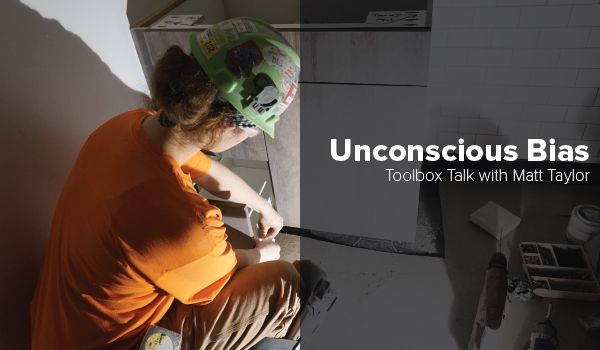Written by Matt Taylor, CHST, SMS
Thank you all for celebrating Women In Construction Week with us. While the world has come so far in regards to diversity and representation, it is our job to continue to strive to give our job sites the same diversity represented in the communities we build in. Today we want to talk about things we normally shy away from on the job site to make the future of building better for us all.
Many industries, like the construction industry, still suffer from a significant gender gap. In fact, only about 10% of construction workers are women, according to the Bureau of Labor Statistics. With only about 1% of these women holding positions in the field. That means that for every 100 tradespeople on a job, on average there is only one woman. This sort of representation is unacceptable if we hope to achieve representation and to keep up with the labor demands of a booming industry.
By educating in our schools and communities about the benefits of a career in construction we can change the perception of careers in construction to effect real change.
The Associated Schools of Construction conducted a study recently, asking children ages 7 to 12 about their career aspirations. Nearly half of the kids believed construction work was only for men, and only two kids (both boys) out of the group of 104 aspired to enter the construction field.
In addition to supporting gender equality from a human rights and diversity inclusion perspective, attracting and retaining more women in the construction workforce has major benefits. In fact, according to the Peterson Institute, companies who were in the top 25% in gender diversity of their workforce were 46% more likely to outperform their industry average. So how do we change the perspective of the industry to attract more women and people of all diversities and help them succeed in their positions?
Now that we know the facts, let’s start with an exercise to make us all familiar with something that’s normally uncomfortable to address at work, unconscious bias. Unconscious bias is something that we all encounter and can become aware of to help make the job site a more diverse, thriving environment.
I want you to begin by thinking about the 10 people in your life who you trust most. Try to make everyone on the list someone that is not family.
Do you have your 10? Now think about what gender those 10 people are, what race, what orientation, what age, what economic level?
Notice how similar these 10 people are to yourself. This is called the “like me” bias.
These biases are incorrect due to the fact that we are using instinct, not analysis to make decisions.
For example, did you know that people are statistically more likely to listen to a male voice? By raising the awareness of unconscious bias we can help bridge the gap in workforce diversity.
So let’s break down the levels of trust and how this “like me” bias occurs. All of our relationships begin in Level 1, this is the level of familiarity where you know a person’s name and you’re on a “hello” basis.
About 10% of our relationships in Level 1 move on to Level 2, this level is called COMFY (or “come over to my front yard”), these are the people that you would invite into your home.
Level 3 then is even more selective; these are the say 10 or 20 people that you trust the most. And for most people, this is the circle that is least diverse. We immediately judge whether people are like us. As humans, our brain creates shortcuts to make decisions quickly without overwhelming, this creates unintentional bias. Our minds create unconscious biases such as “this person is like me, so I can trust them.”
And what by consequence happens is when an exciting or high profile project or interesting job comes up, or we need advice or a partner on a project, we’re more likely to give the task to people in our Level 3. Causing us to replicate people that see the world more like us, and losing diversity in work. We have to consciously work against our unconscious bias to create a diverse workforce benefiting project safety, collaboration and quality.
Selecting from a wide range of talent provides a viable workforce for the future of the construction industry.
So what steps can we take to work against this?
1. Deliberately slow down decision making
2. Reconsider the reason for decisions
3. Question cultural stereotypes
4. Monitor each other for unconscious bias
And most importantly, we want to challenge you to always remember the humanity of the women and men next to you on the job site. Meaning, we all have families we’re here to support, a lot of us have kids and people that we care to get home safely to, and at the end of the day, we all care as much about making it home safely. So remember to always consider the new things you can learn from someone unlike you, whether it be a new tool to hone in on our skills or tips for increasing safety on the job site.
If you’re uncomfortable and felt challenged reading this, remember none of us is the root but it takes us all to make it better. Thank you and HAPPY WIC WEEK 2020!

